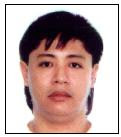As mentioned in a previous article, heat is the enemy of your computer. These are things you can do to help your desktop run cooler and prevent it from premature break down due to over
heating.
There could be probably a lot of mini cooling fans in your computer, it would be best if you just take your computer to a repair man every once in a while for cleaning and maintainance. But if you are like me who likes to tinker with things, continue reading, but be warned, they are risk involved here, so think before you proceed to disect your computer. Warranties may be void, you may add more to the problem than solve it or worst, you may get zapped!
First thing to do is unplug your computer from its power source, check your documentaion on how to open the computer casing, some side access casing have fans on those covers, meaning you have to disconnect this before setting it aside.
Assuming that you get passed that, look at the fan some where in the middle part of everything , that would be the proccessor fan, it will be large with a heavy alluminum metal beneath it, called a heat sink. Check this for dust or try to turn the fan blades with your fingers, if its too dusty use a brush or if you have a compressor which is better. If the blades are rough to turn spray some contact cleaner in it like WD-40 and the like, then try to spin the blades again, if it spins freely then the problem is solved, if not, an eminent replacement maybe at hand.
Next would be the fan on the rear side or underneath the machine, depends on where the power
supply is located, if you find it, do the same test and remedy as above.
If your PC has a daughter board VGA or video card, check that too, these small fans wear out faster than the other fans inside the computer.
Misc. or casing fans - These are those that are mounted or screwed onto the casing itself, though not major fans you need not worry about it, but they help circulate the warm and cool air, so do
check those also.
Do these proceedures every six months or so depending on the environment you are around, here, its kinda warm and dusty so I clean it more often than every six months.
heating.
There could be probably a lot of mini cooling fans in your computer, it would be best if you just take your computer to a repair man every once in a while for cleaning and maintainance. But if you are like me who likes to tinker with things, continue reading, but be warned, they are risk involved here, so think before you proceed to disect your computer. Warranties may be void, you may add more to the problem than solve it or worst, you may get zapped!
First thing to do is unplug your computer from its power source, check your documentaion on how to open the computer casing, some side access casing have fans on those covers, meaning you have to disconnect this before setting it aside.
Assuming that you get passed that, look at the fan some where in the middle part of everything , that would be the proccessor fan, it will be large with a heavy alluminum metal beneath it, called a heat sink. Check this for dust or try to turn the fan blades with your fingers, if its too dusty use a brush or if you have a compressor which is better. If the blades are rough to turn spray some contact cleaner in it like WD-40 and the like, then try to spin the blades again, if it spins freely then the problem is solved, if not, an eminent replacement maybe at hand.
Next would be the fan on the rear side or underneath the machine, depends on where the power
supply is located, if you find it, do the same test and remedy as above.
If your PC has a daughter board VGA or video card, check that too, these small fans wear out faster than the other fans inside the computer.
Misc. or casing fans - These are those that are mounted or screwed onto the casing itself, though not major fans you need not worry about it, but they help circulate the warm and cool air, so do
check those also.
Do these proceedures every six months or so depending on the environment you are around, here, its kinda warm and dusty so I clean it more often than every six months.
